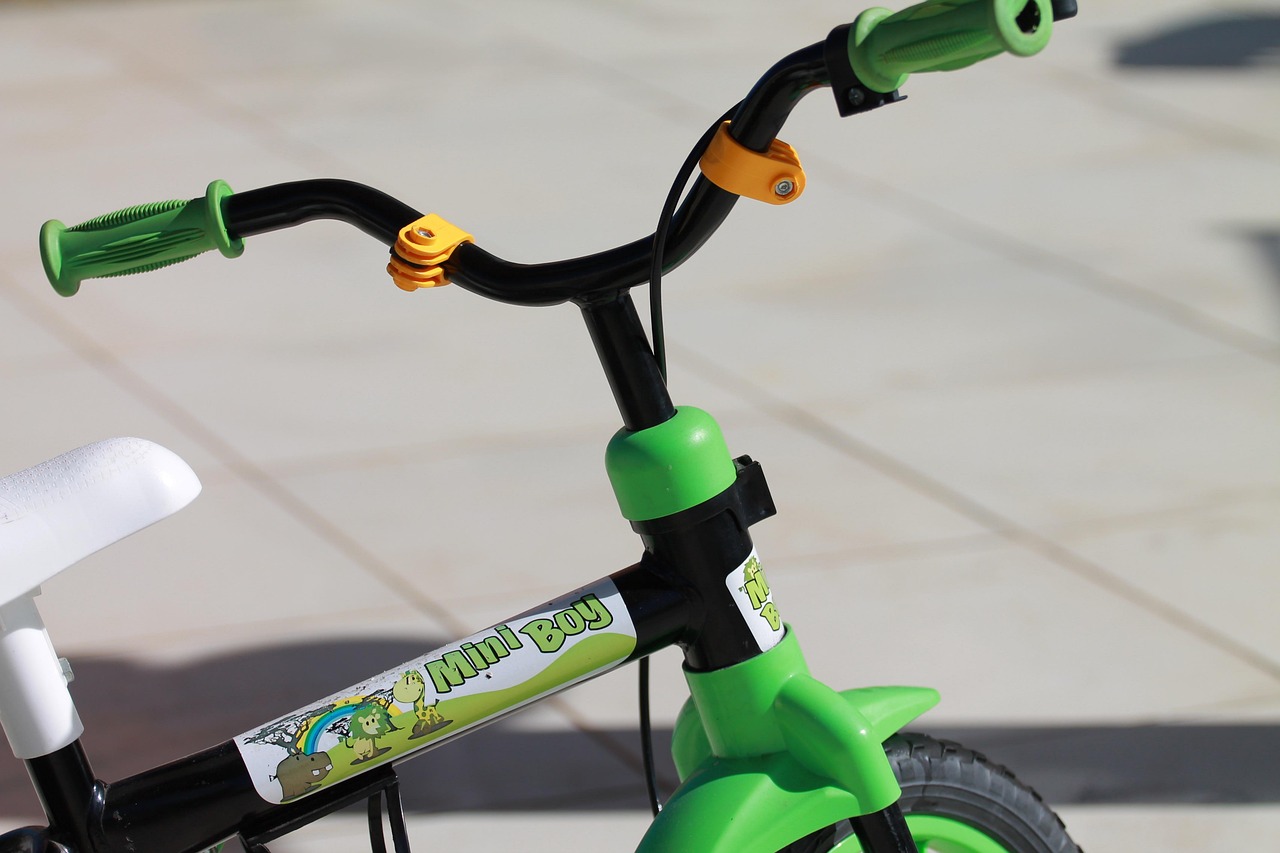This article delves into the fascinating world of long-range electric bikes, providing insights into their technology, performance, and the various factors that influence their distance capabilities. This comprehensive overview is designed to equip potential buyers with the knowledge they need to make informed decisions.
Understanding Electric Bike Range
The term electric bike range refers to the maximum distance an e-bike can travel on a single charge. This range is significantly influenced by factors such as battery capacity, the type of terrain, and the habits of the rider.
Factors Affecting Electric Bike Range
- Rider Weight: Heavier riders may experience reduced range.
- Terrain Type: Hilly or rough terrains consume more battery power compared to flat surfaces.
- Speed: Higher speeds can lead to quicker battery depletion.
- Pedal Assist Level: The level of assist used during rides can greatly affect distance.
Battery Capacity and Type
The battery capacity, measured in watt-hours (Wh), is crucial in determining how far an electric bike can go before needing a recharge. Most e-bikes use lithium-ion batteries, which strike a balance between weight, performance, and longevity.
Battery Maintenance Tips
- Avoid complete discharges.
- Store batteries in a cool place.
Real-World Range Estimates
While many long-range electric bikes claim a distance of 40 to 100 miles, real-world conditions often yield different results. Factors such as rider behavior and environmental conditions can lead to discrepancies between advertised and actual range.
Range Anxiety: What It Is and How to Overcome It
Range anxiety refers to the fear of running out of battery power. Understanding the range and planning routes can help alleviate this concern for riders.
Enhancing Your Electric Bike’s Range
- Optimal Riding Techniques: Maintaining a steady speed and utilizing regenerative braking can extend your bike’s range.
- Upgrading Components: Investing in high-quality tires and efficient motors can enhance overall efficiency.
Choosing the Right Electric Bike for Your Needs
When selecting an electric bike, consider your riding habits, the terrain you’ll encounter, and your desired range. Researching and comparing various models based on specifications and user reviews will aid in making an informed decision.
Test Riding for Realistic Expectations
Test riding multiple bikes allows potential buyers to experience the performance and range of different electric bike models firsthand before making a purchase.
In conclusion, understanding the intricacies of long-range electric bikes can significantly enhance your riding experience. By considering the factors discussed, you can choose a bike that aligns with your lifestyle and riding needs.

Understanding Electric Bike Range
The Truth Behind the Long Range Electric Bike: How Far Can You Really Go?
Electric bike range is a critical aspect to consider for anyone interested in purchasing an e-bike. Understanding how far an electric bike can travel on a single charge is essential for planning rides and ensuring a smooth experience. The range is not just a number; it is influenced by several factors that can either enhance or limit the distance you can travel.
Electric bike range refers to the maximum distance an e-bike can travel on a single charge, influenced by battery capacity, terrain, and rider habits. The range can vary significantly from one model to another, and even from one ride to the next, depending on how these factors interplay.
Factors Affecting Electric Bike Range
- Rider Weight: Heavier riders may find their range reduced due to increased energy consumption.
- Terrain Type: Hilly or uneven terrains require more power, which can drain the battery faster.
- Speed: Higher speeds typically consume more energy, affecting overall distance.
- Pedal Assist Levels: Using a higher level of pedal assist can significantly impact the range.
Battery Capacity and Type
The battery’s capacity, measured in watt-hours (Wh), is a crucial determinant of how far an electric bike can travel before needing a recharge. For example, a bike with a 500Wh battery will generally have a longer range than one with a 250Wh battery, assuming all other factors are equal.
Lithium-Ion vs. Lithium Polymer
Lithium-ion batteries are the most common in e-bikes, providing a balance of weight, performance, and longevity compared to lithium polymer alternatives. Understanding the differences can help buyers make informed decisions about battery selection.
Battery Maintenance Tips
Proper maintenance can prolong battery life and enhance overall range. Tips include:
- Avoiding complete discharges
- Storing batteries in a cool, dry place
- Regularly checking connections and terminals for corrosion
Conclusion
In summary, understanding electric bike range is essential for maximizing the potential of your e-bike. By being aware of the factors that influence range and taking steps to maintain your battery, you can enjoy longer rides and a more satisfying cycling experience.

Factors Affecting Electric Bike Range
Understanding the range of electric bikes is crucial for potential buyers looking to maximize their riding experience. The distance an electric bike can travel on a single charge is influenced by a multitude of factors. Below, we explore these elements in detail to provide a clearer picture of what affects electric bike range.
- Rider Weight: The weight of the rider significantly impacts the bike’s performance. Heavier riders may find that their bike consumes more battery power, resulting in a reduced range. This is due to the increased energy required to propel a heavier load.
- Terrain Type: The terrain over which you ride plays a vital role in determining range. Hilly or uneven surfaces demand more energy compared to flat roads. Riders tackling steep inclines will notice a quicker depletion of battery compared to those riding on smooth, level paths.
- Speed: The speed at which a rider travels can also affect range. Higher speeds typically lead to increased energy consumption, which can shorten the distance achievable on a single charge. Maintaining a moderate pace can help extend the bike’s range.
- Pedal Assist Level: Electric bikes often come equipped with different levels of pedal assist. Utilizing a higher pedal assist level can provide a boost but will also drain the battery more rapidly. Riders can optimize their range by selecting lower assist levels when possible.
- Weather Conditions: External factors like wind resistance and temperature can further influence battery efficiency. Riding against strong winds or in extreme temperatures may require additional power, thus impacting the overall range.
- Tire Pressure: Proper tire maintenance, including maintaining the correct pressure, can enhance efficiency. Under-inflated tires create more rolling resistance, which can lead to increased battery consumption.
By considering these factors, riders can better understand how to maximize the range of their electric bikes, leading to a more enjoyable and efficient riding experience.
Battery Capacity and Type
are fundamental aspects to consider when evaluating the performance and range of electric bikes. The battery’s capacity, measured in watt-hours (Wh), is a critical factor that directly influences how far an electric bike can travel on a single charge. A higher watt-hour rating typically means a longer range, allowing riders to cover more distance before needing to recharge.
Electric bike batteries come in various types, with lithium-ion batteries being the most prevalent choice among manufacturers. These batteries offer a balanced combination of lightweight design, efficiency, and long lifespan. In contrast, lithium polymer batteries are less common, often used in specialized applications due to their unique characteristics, such as flexibility and higher discharge rates.
When considering battery capacity, it’s essential to understand how it interacts with other factors affecting range. For instance, the terrain can significantly impact battery performance. Riding on hilly or rough terrains consumes more energy compared to flat surfaces, which can lead to a decreased range. Additionally, the rider’s weight, speed, and the level of pedal assist used during rides also play a vital role in determining how far the bike can go.
To maximize the benefits of your electric bike’s battery, proper maintenance is crucial. Avoiding complete discharges and storing the battery in a cool, dry place can prolong its life and enhance overall performance. Regular checks on battery connections and cleanliness can also prevent potential issues that may arise from dirt or corrosion.
Ultimately, understanding battery capacity and type is essential for any potential electric bike owner. By considering these factors, riders can make informed decisions that align with their riding habits and expected range, ensuring a satisfying and efficient biking experience.
Lithium-Ion vs. Lithium Polymer
Lithium-ion batteries have become the standard choice for electric bikes, primarily due to their favorable characteristics in terms of weight, performance, and longevity. In contrast, lithium polymer batteries offer some advantages but are less commonly used in e-bikes. Understanding the differences between these two battery types is essential for potential e-bike buyers.
The weight of lithium-ion batteries is significantly lower than that of traditional lead-acid batteries, making them ideal for e-bikes where lightweight design is crucial for performance. Furthermore, lithium-ion batteries generally provide a longer lifespan, often lasting for several hundred to over a thousand charge cycles, which translates to years of reliable use.
In terms of performance, lithium-ion batteries excel in delivering consistent power output, which is vital for maintaining speed and efficiency during rides. They also charge faster than lithium polymer batteries, allowing riders to get back on the road more quickly after a recharge.
However, lithium polymer batteries have their own set of benefits. They can be molded into various shapes, allowing for more flexible design options in e-bike frames. This adaptability can lead to more efficient space utilization. Additionally, lithium polymer batteries tend to have a higher energy density, which means they can store more energy in a smaller package.
Despite these advantages, the higher cost of lithium polymer batteries and their generally shorter lifespan compared to lithium-ion batteries make them less appealing for e-bike manufacturers and consumers alike.
In conclusion, while both battery types have their unique benefits, lithium-ion batteries remain the preferred choice for most e-bike applications. Their combination of lightweight design, long lifespan, and reliable performance makes them an excellent investment for anyone looking to enjoy the benefits of electric biking.
Battery Maintenance Tips
Maintaining the health of your electric bike’s battery is crucial for ensuring optimal performance and longevity. Here are some essential tips to help you maximize the lifespan of your battery and enhance your overall riding experience:
- Avoid Complete Discharges: Regularly allowing your battery to fully discharge can significantly shorten its lifespan. Aim to recharge your battery when it drops to around 20-30% capacity.
- Store in a Cool Place: Heat can negatively affect battery performance. Always store your battery in a cool, dry environment, ideally between 32°F and 77°F (0°C to 25°C).
- Charge Regularly: Keeping your battery charged can help maintain its health. If you don’t plan to use your bike for an extended period, charge the battery to about 50% before storing it.
- Use the Right Charger: Always use the manufacturer’s recommended charger. Using an incompatible charger can lead to battery damage or even safety hazards.
- Monitor Battery Health: Many modern e-bikes come with battery management systems that allow you to monitor health. Pay attention to any alerts or warnings regarding battery performance.
- Keep Terminals Clean: Regularly inspect and clean the battery terminals to prevent corrosion, which can impede performance and charging efficiency.
By following these battery maintenance tips, you can ensure that your electric bike remains reliable and efficient for years to come. Proper care not only enhances the battery’s lifespan but also improves the overall range and performance of your ride.
Terrain and Riding Conditions
The type of terrain plays a critical role in determining the performance of electric bikes. Riders often find that navigating through hilly or rough terrains can significantly consume more battery power compared to traversing flat and smooth surfaces. This phenomenon can be attributed to several factors that affect the overall efficiency and energy consumption of an electric bike.
When cycling on steep inclines, the electric motor has to work harder to overcome the gravitational pull. This increased effort results in a higher drain on the battery, leading to a reduced range. In contrast, riding on flat terrain allows the bike to maintain a steady pace with less energy expenditure, thereby extending the distance the bike can travel on a single charge.
Moreover, rough terrains, such as gravel paths or uneven surfaces, can also impact performance. The additional resistance faced when navigating through these conditions requires more power, which can further deplete the battery. Riders may experience a noticeable difference in range when shifting from smooth roads to challenging off-road trails.
To optimize performance in varying terrains, it’s essential for riders to consider their riding habits and the level of pedal assist they utilize. Adjusting these factors can help balance the energy consumption based on the terrain. For example, using a lower pedal assist level on flat surfaces can conserve battery life for when it’s needed most on inclines.
In summary, understanding how affect electric bike performance is crucial for maximizing range. Riders should be aware of the challenges posed by different surfaces and adjust their riding style accordingly to ensure they get the most out of their electric bike.

Real-World Range Estimates
The Truth Behind the Long Range Electric Bike: How Far Can You Really Go?
When considering the purchase of a long-range electric bike, it’s essential to understand the real-world range of these machines. While many manufacturers advertise a range between 40 to 100 miles, the actual distance you can travel often varies significantly based on several factors.
Most long-range electric bikes claim a range between 40 to 100 miles, but real-world conditions often yield different results based on usage and environmental factors. The advertised range is typically based on optimal conditions, which may not reflect the everyday experience of the average rider.
To truly grasp the capabilities of an electric bike, one must consider several key factors:
- Rider Weight: Heavier riders will generally experience a reduced range due to increased energy consumption.
- Terrain: Riding uphill or on rough terrain can drain the battery faster compared to flat, smooth surfaces.
- Speed: Higher speeds often consume more battery power, reducing overall range.
- Assist Level: Using a higher level of pedal assist can lead to quicker battery depletion.
Manufacturers often test their bikes under ideal conditions, such as flat terrain and moderate speeds, leading to discrepancies between advertised and actual range. It’s crucial for potential buyers to consider these factors when evaluating a bike’s range.
Range anxiety is a common concern among electric bike users—fear of running out of battery power during a ride. To mitigate this, riders can:
- Plan routes with charging stations.
- Monitor battery levels regularly.
- Adjust riding style to conserve battery life.
By understanding these elements, potential buyers can make informed decisions and set realistic expectations regarding the range of long-range electric bikes.
Testing Conditions for Range Claims
When it comes to electric bikes, understanding the accuracy of range claims is crucial for potential buyers. Manufacturers often conduct tests under ideal conditions—such as flat terrain, moderate temperatures, and optimal rider weight—which may not accurately reflect the real-world scenarios that everyday riders encounter. This discrepancy can lead to significant differences between the advertised range and the actual distance achievable.
For instance, many manufacturers boast ranges of up to 100 miles on a single charge. However, factors such as hilly terrain, wind resistance, and even the rider’s weight can drastically reduce this number. In real-world conditions, a rider may only achieve 60-70% of the advertised range, depending on these variables.
Additionally, the level of pedal assist selected during the ride plays a significant role in determining how far one can go. Higher levels of assist consume more battery power, leading to a shorter range. Riders who opt for a more conservative approach, using lower assist levels, may find they can extend their journey significantly.
Moreover, the environmental factors such as temperature can also impact battery performance. Cold weather can reduce battery efficiency, leading to a further decrease in range. Therefore, potential buyers should consider these aspects when assessing an e-bike’s capabilities.
In conclusion, while manufacturers provide valuable insights into the potential range of their electric bikes, it is essential for consumers to approach these claims with a critical eye. By understanding the real-world implications of testing conditions, riders can make more informed decisions and avoid the disappointment of falling short of expected distances.
Range Anxiety: What It Is and How to Overcome It
Range anxiety is a prevalent concern among electric bike riders, stemming from the fear of depleting battery power before reaching their destination. This anxiety can deter potential riders from fully embracing electric biking, despite its numerous benefits. Understanding the factors that influence electric bike range and employing effective strategies can significantly alleviate this concern.
Understanding Electric Bike Range
The range of an electric bike refers to the maximum distance it can travel on a single battery charge. This range is affected by several factors:
- Battery Capacity: Measured in watt-hours (Wh), a higher capacity typically means a longer range.
- Terrain: Hilly or uneven surfaces require more power, reducing overall distance.
- Rider Weight: Heavier riders may experience a shorter range due to increased energy consumption.
- Speed and Assist Levels: Higher speeds and maximum assist levels can drain the battery faster.
Planning Your Routes
To combat range anxiety, riders should plan their routes effectively. Utilizing mapping applications designed for cyclists can help identify charging stations or strategically planned stops. This foresight allows riders to enjoy their journey without the constant worry of running out of power.
Optimizing Riding Habits
Riders can also extend their bike’s range by adopting optimal riding techniques. Maintaining a consistent speed, using lower assist levels when feasible, and avoiding sudden accelerations can all contribute to better battery efficiency. Regular maintenance, such as ensuring proper tire pressure, can further enhance performance.
Conclusion
Range anxiety is a common issue for electric bike riders, but it can be effectively managed through understanding the factors influencing range and implementing strategic planning. By being proactive, riders can enjoy the freedom and convenience of electric biking without fear of being stranded.

Enhancing Your Electric Bike’s Range
Maximizing the range of your electric bike is essential for enjoying longer rides without the anxiety of running out of battery. Here are several effective strategies to help you achieve this:
- Optimize Your Riding Style: Maintain a steady speed during your rides. Rapid accelerations and decelerations can drain your battery significantly. Aim for a smooth, consistent pace to enhance efficiency.
- Maintain Proper Tire Pressure: Keeping your tires inflated to the recommended pressure reduces rolling resistance, allowing your bike to glide more easily. Check your tire pressure regularly to ensure optimal performance.
- Utilize Lower Assist Levels: Whenever possible, use lower levels of pedal assist. This not only conserves battery power but also encourages physical activity, making your ride more enjoyable and beneficial for your health.
- Plan Your Routes: Selecting flatter routes can greatly extend your range. Hilly terrains require more energy, so consider mapping out your rides on less challenging landscapes.
- Use Regenerative Braking: If your electric bike is equipped with regenerative braking, take advantage of it. This feature helps recharge the battery while slowing down, effectively extending your range.
By implementing these strategies, you can significantly enhance the distance your electric bike can travel on a single charge. Remember, a little planning and adjustment to your riding habits can lead to a much more satisfying riding experience.
Conclusion: Enhancing your electric bike’s range is not just about the technology; it’s also about how you ride and care for your bike. By optimizing your riding style, maintaining your bike, and making informed choices, you can enjoy longer rides and explore more without the worry of battery depletion.
Optimal Riding Techniques
are essential for maximizing the range of your electric bike. Understanding how to ride effectively can significantly enhance your experience and reduce the frequency of charging. Here are several strategies that every rider should consider:
- Maintain a Steady Speed: Keeping a consistent speed is crucial. Sudden accelerations can drain the battery quickly. Aim to ride at a moderate pace, which allows the bike to use energy more efficiently.
- Utilize Regenerative Braking: Many electric bikes come equipped with regenerative braking systems. This feature allows the bike to recover some energy during braking, which can be redirected to recharge the battery slightly. Use this technique whenever possible, especially on downhill slopes.
- Avoid Sudden Accelerations: Quick bursts of speed can lead to increased power consumption. Instead, gradually increase your speed to maintain battery efficiency. This approach not only saves energy but also enhances your control over the bike.
- Adjust Your Pedal Assist Level: Most electric bikes offer different levels of pedal assistance. Using a lower assist level can help conserve battery life. Reserve higher levels of assistance for challenging terrains or when you need an extra boost.
- Optimize Your Riding Position: A proper riding posture can reduce wind resistance and improve aerodynamics. Leaning slightly forward can help you cut through the wind more efficiently, which can also contribute to better range.
- Plan Your Route: Selecting routes that are flatter and have fewer stops can help maximize your bike’s range. Avoiding steep hills and heavy traffic can lead to a more efficient ride.
By implementing these , riders can significantly enhance the performance and range of their electric bikes. Not only does this lead to a more enjoyable ride, but it also reduces the anxiety associated with battery depletion.
Upgrading Components for Better Performance
Enhancing the performance of your electric bike is essential for maximizing its efficiency and range. One of the most effective ways to achieve this is through upgrading key components. Below, we explore how investing in high-quality tires and efficient motors can significantly improve your riding experience.
- High-Quality Tires: The tires of your electric bike are crucial for maintaining traction and reducing rolling resistance. Investing in premium tires can lead to better grip on various terrains, allowing for smoother rides and less energy consumption. Additionally, tires with lower rolling resistance make it easier for the motor to propel the bike, ultimately enhancing the overall range.
- Efficient Motors: The motor is the heart of your electric bike. Upgrading to a more efficient motor can provide better power output and performance. High-quality motors are designed to optimize energy usage, which means you can travel further on a single charge without compromising speed or acceleration.
- Weight Reduction: Consider components that are lightweight yet durable. Reducing the overall weight of your bike can significantly enhance performance, allowing for easier maneuverability and less strain on the motor. This can also contribute to improved battery life and range.
By focusing on these upgrades, you can transform your electric bike into a more efficient and enjoyable mode of transportation. Not only will you experience improved performance, but you’ll also gain confidence in your bike’s ability to handle longer rides without the constant worry of battery depletion.
In conclusion, investing in high-quality tires and efficient motors is a vital step towards enhancing your electric bike’s performance. With these upgrades, you can enjoy longer rides, better handling, and an overall improved biking experience.

Choosing the Right Electric Bike for Your Needs
The Truth Behind the Long Range Electric Bike: How Far Can You Really Go?This article explores the capabilities of long-range electric bikes, examining their technology, performance, and factors affecting distance to provide a comprehensive understanding for potential buyers.
When it comes to selecting an electric bike, it is essential to consider several aspects that align with your personal riding habits and lifestyle. Here are some key factors to keep in mind:
- Riding Habits: Think about how often you plan to ride your e-bike. Are you looking for a bike for daily commuting, leisurely weekend rides, or long-distance touring? Understanding your primary use will help narrow down your options.
- Terrain: The type of terrain you will be riding on plays a crucial role in your choice. If you live in a hilly area, you may need a bike with more powerful motors and higher battery capacity to handle steep climbs effectively.
- Desired Range: Consider how far you typically travel on a single trip. Most long-range electric bikes offer distances between 40 to 100 miles on a single charge, but real-world conditions may vary. Make sure to choose a bike that meets or exceeds your range requirements.
- Comfort and Fit: Ensure that the bike fits your body type and provides comfort during rides. A test ride can help you assess whether the bike’s design suits your needs.
- Budget: Electric bikes come in various price ranges. Set a budget that reflects your needs and compare models within that range to find the best value.
By taking the time to evaluate these factors, you can make an informed decision that aligns with your lifestyle and enhances your riding experience.
Conclusion
Choosing the right electric bike is a significant investment in your mobility and enjoyment. By considering your riding habits, terrain, and desired range, you can find a model that perfectly fits your lifestyle and ensures a satisfying ride.
Comparing Different E-Bike Models
When it comes to choosing an electric bike, the plethora of options available can be overwhelming. Researching and comparing various e-bike models based on their specifications and user reviews is essential for making an informed decision. This process not only helps you understand the features of each model but also allows you to assess how well they align with your personal needs and riding style.
To effectively compare e-bike models, consider the following key aspects:
- Battery Capacity: Look for the watt-hours (Wh) rating, as it directly impacts the bike’s range.
- Motor Power: The wattage of the motor affects acceleration and hill-climbing ability.
- Weight: A lighter bike is generally easier to handle, especially when riding without assist.
- Frame Design: Different designs cater to various riding styles, from commuting to off-road adventures.
- Price: Set a budget and compare models within that range to find the best value.
Additionally, user reviews can provide real-world insights into performance and reliability. Look for feedback on:
- Battery life during typical use.
- Comfort and ergonomics during long rides.
- Durability and maintenance issues encountered.
Many manufacturers offer comparison tools on their websites, allowing potential buyers to see side-by-side specifications. Test riding is also a crucial step; it gives you a feel for the bike’s handling and comfort, helping to solidify your choice.
Ultimately, making an informed decision involves thorough research and hands-on experience. By analyzing specifications and user feedback, you can select an e-bike that meets your needs and enhances your riding experience.
Test Riding for Realistic Expectations
Test riding multiple electric bikes is an essential step for potential buyers looking to make an informed purchase. This hands-on experience allows riders to evaluate the performance, comfort, and features of various models, ensuring they choose the right bike for their specific needs.
When test riding, it’s important to consider several factors that affect the overall riding experience:
- Comfort: Pay attention to how the bike feels during the ride. Is the seat comfortable? Are the handlebars positioned well for your height?
- Performance: Test the bike on different terrains. How does it handle hills or rough surfaces? Does it provide adequate power and speed?
- Battery Life: While you may not be able to fully test the range during a short ride, assess how the bike accelerates and maintains speed. This can give you an idea of its efficiency.
- Features: Explore the bike’s features, such as pedal assist levels, display options, and braking systems. Make sure they align with your riding style.
Additionally, consider the brand reputation and read user reviews to gain insights into the reliability and durability of the bike. Engaging with sales staff can also provide valuable information about the bike’s specifications and any potential issues.
Ultimately, test riding multiple bikes not only enhances your understanding of different models but also helps to alleviate range anxiety. By experiencing firsthand how each bike performs, you can set realistic expectations about distance and capabilities based on your riding habits and local terrain.
In conclusion, taking the time to test ride various electric bikes is crucial for making a well-informed decision. This approach ensures that you invest in a bike that not only meets your performance needs but also provides a comfortable and enjoyable riding experience.
Frequently Asked Questions
- How far can I really go on a long-range electric bike?
The distance you can travel on a long-range electric bike typically ranges from 40 to 100 miles on a single charge. However, this can vary based on factors like terrain, rider weight, and how much pedal assist you use.
- What factors affect the range of my electric bike?
Several key factors influence your e-bike’s range, including rider weight, the type of terrain (flat vs. hilly), speed, and the level of pedal assist you choose. For instance, riding uphill or at high speeds will drain the battery faster than cruising on flat ground.
- What type of battery is best for long-range electric bikes?
Lithium-ion batteries are the most common choice for e-bikes due to their balance of weight, performance, and longevity. They generally provide a reliable range, making them ideal for long-distance rides.
- How can I extend the range of my electric bike?
You can extend your e-bike’s range by optimizing your riding style, such as maintaining a steady speed, keeping your tires properly inflated, and using lower assist levels when possible. Proper battery maintenance also plays a crucial role in maximizing your bike’s distance.
- What is range anxiety, and how can I overcome it?
Range anxiety is the fear of running out of battery power while riding. To overcome this, familiarize yourself with your bike’s range, plan your routes ahead of time, and consider carrying a portable charger for peace of mind.












